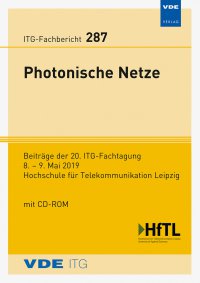Experimental Investigation of Security Gaps when using Punctured LDPC Coding in Coherent Systems up to 64-GBd DP-64QAM
Conference: Photonische Netze - 20. ITG-Fachtagung
05/08/2019 - 05/08/2019 at Leipzig, Deutschland
Proceedings: Photonische Netze
Pages: 3Language: englishTyp: PDF
Personal VDE Members are entitled to a 10% discount on this title
Authors:
Schmidt-Langhorst, Carsten; Elschner, Robert; Emmerich, Robert; Schubert, Colja (Fraunhofer Institute for Telecommunications, Heinrich-Hertz-Institute, Berlin, Germany)
Pfeiffer, Johannes; Frey, Felix; Fischer, Robert F. H. (Institute of Communications Engineering, Ulm University, Ulm, Germany)
Abstract:
In optical transmission systems, security against eavesdroppers is of increasing importance. Following the concept of physical-layer security, we experimentally quantify the security gap that can be achieved when applying punctured low-density parity-check (LDPC) codes for various modulation schemes and bit rates in a state-of-the art laboratory coherent optical communication system. We examine operating points at gross bit-rates up to 768 Gb/s using up to 64.0-GBd dual-polarization (DP) 64-ary quadrature amplitude modulation (QAM) in combination with bit-interleaved coded modulation (BICM). We find that security gaps ranging from 5.6 dB for a net secure data rate of 76.2 Gb/s (32-GBd DP-QAM04) up to 10.7 dB for 457 Gb/s (64-GBd DP-QAM64) are required for the legitimate receiver over the eavesdropper. For the low-cardinality DP-QAM04 format the required security gap is mainly equal to the theoretically achievable minimum security gap. However, with increasing cardinality of the modulation format, the practical implementation penalty accounts for a significant portion of the security gap of up to an additional 3.7 dB at 64-GBd DP-QAM64.


